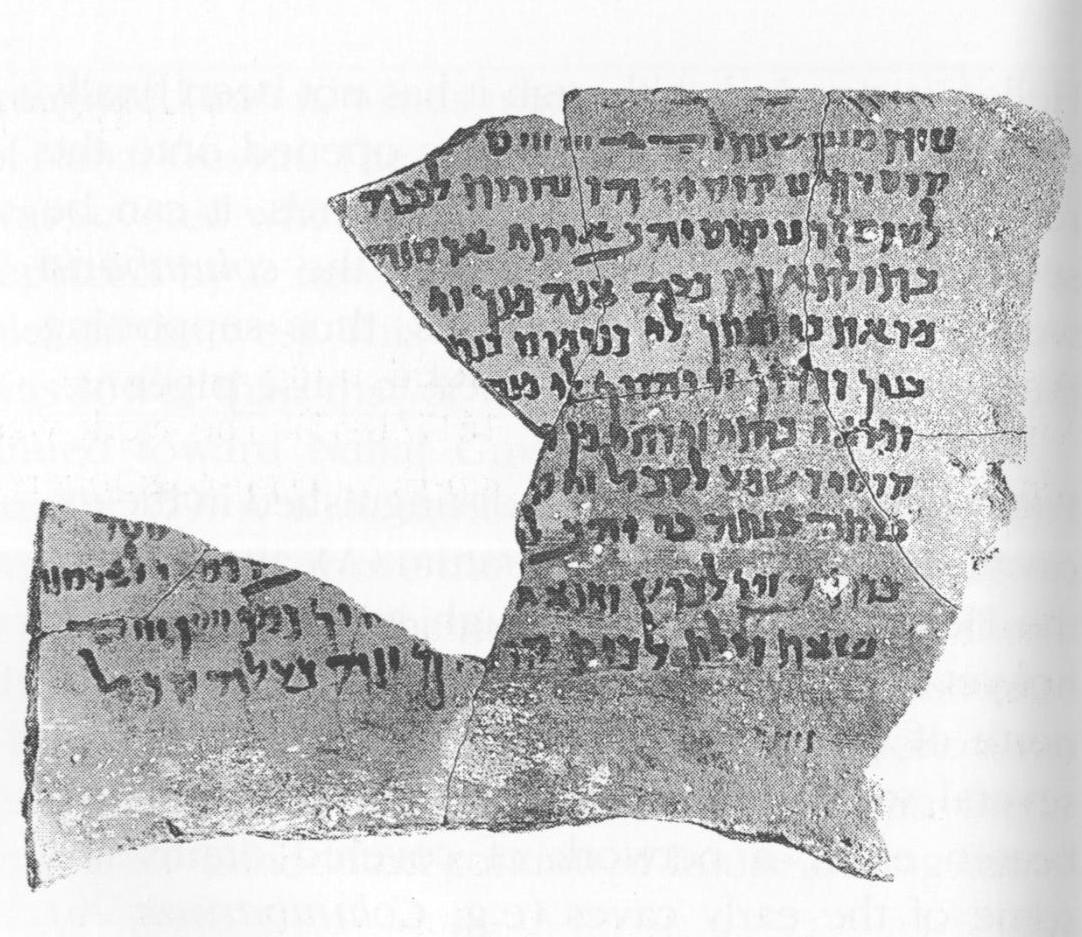Oldest Marriage Contract
Aramaic Ostracon
Amos Kloner and Esther Eshel
Found In Maresha in 1993
The marriage contract recorded on the ostracon was drawn up by the Edomite community of Maresha in June 176 BCE, as attested by the date according to the Seleucid era at the beginning of the contract. This marriage contract is the earliest known in Israel; its discovery bridges the gap between the Elephantine documents of the 5th century BCE and the documents of the 1st-2nd centuries CE from the Judean Desert.
The structure of the document is closely similar to the contemporaneous Babylonian marriage con¬tracts written in Akkadian. There too, the bride¬groom’s words are in the first person, as if in a dialogue, at whose conclusion the father of the bride gives him his daughter to be his wife. Some of the expressions in the contract, such as “of his own free will” (Line 2) and the use of the verb šm’ (Line 8) attest to the similarity with the Babylonian contracts. Other elements in the contract have points of resemblance with contemporaneous Demotic documents from Egypt, such as the appointment of the sons to be born of this marriage as the owners of the bridegroom’s house, that is, his lawful heirs. There is also some affinity with the words of the Jewish ketuba, e.g. the expression “she will give me according to custom” and “male sons I shall have from her”.
Documents written on pottery were probably considered valid by the Edomites as well as by the Jews (Tosefta, Kiddushin 1-a-b). However, presumably the ostracon is not the legal marriage contract itself, but rather a draft or copy. Several elements support this assumption- this contract is the only one from the Land of Israel which is written on a potsherd; the 12th line appears to be the space for the signatures, since a document of this kind should bear several signatures-the wit¬nesses, sometimes the bridegroom and the father of the bride; and each signature is expected to include, as is customary, the name of the signer and his patronymic. The sum of the dowry mentioned in the contract indicates that the families of Arsinoe and Qosram were wealthy, so that parch¬ment or papyrus was well within their means.
The conditions of the contract favor the bride- the dowry was given to her and her sons were promised that they would be the heirs of their father. However, in the absence of parallels in the Land of Israel, it cannot be determined whether these terms attest to the practice prevalent in that country in the Hellenistic period.
Seven fragments of an ostracon inscribed with an Aramaic document were found in 1993 in a passage in a large subterranean complex in the Lower City at Maresha. The fragments were recovered in an earth fill, which also contained numerous pottery vessels, the majority of the Hellenistic period and the rest from the Persian period. Presumably, some of the earth fell into the complex after the destruction of Maresha in the late 2nd century BCE.
The document, which is inscribed on the inside of a juglet fragment, contains 11 clear lines and ends with one word in the 12th line. The left edge of the ostracon has not survived, but to the right of the inscription the margin (1.5-2.0 cm) has been preserved, so that its original size can be estimated- width 14 cm, height 11 cm.
The right margin of the document is straight, and the lines are fairly even and crowded together. The document was written by a skilled scribe, who may have used the wheelmarks for guidance. The word of three or four letters in the 12th line was written by a different hand and possibly with a different stylus. Three horizontal lines (length c. 1.1 cm) written in ink above the first line may have been made by the scribe to test his stylus, as an ornament or to indicate the beginning of the document. The significance of the incised lines on the upper right side of the ostracon remains unexplained.
The document is a marriage contract written in Aramaic script characteristic of the late 3rd or the first half of the 2nd century BCE. This corresponds to the date which appears at the head of the document. Its translation reads as follows-
1. In the month of Sivan, Year 136, (in the days of) S[eleucus the king
2. Qosram son of Qosyad, of his own free will, [.. .said]
3. to Qosyad son of Qosyehab- there is a (woman) Arsinoe [is her name…
4. the virgin. Now I ask from you that*[
5. my wife, will give me according to the custom of the maiden of [
6. male sons which I shall have from her [
7. and the owners of my house and my heirs, from *[
8. Qosyad heard what Q[osram said and gave him Ar]sinoe
9. his daughter to be his wife. When he gave hi[m his daughter, (or- when Qosram gave his daughter’s dowry) Qosyad ga]ve to Arsinoe
10. his daughter property- clothing and equipment […], (which are) worth three hundred silver zuzim.
11. She took (the property) and entered the house of Qosram, her husband, before….
12. Sign
Excavations and Surveys in Israel Volume 14. Jerusalem, Israel Antiquities Authority, 1994, p.119-120.
